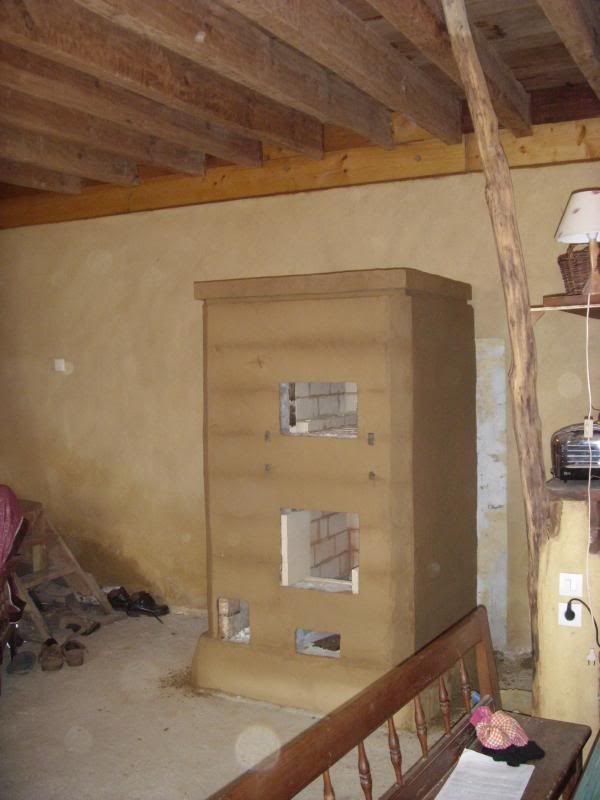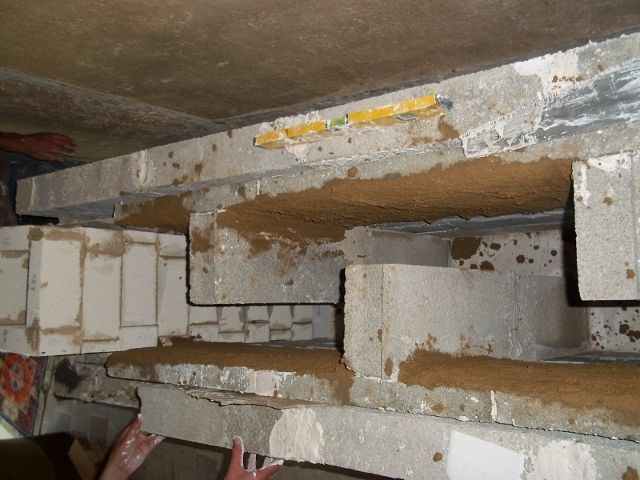adiel
Junior Member
 
Posts: 119
|
Post by adiel on Mar 29, 2014 3:29:27 GMT -8
hello everyone
couldn't find a thread with a clear answer - is it posiblle to make the bell out of concrete?
thanks
|
|
Deleted
Deleted Member
Posts: 0
|
Post by Deleted on Mar 29, 2014 6:35:59 GMT -8
|
|
|
|
Post by DCish on Mar 29, 2014 6:37:51 GMT -8
My understanding from reading posts is that a concrete bell would be fine, but concrete should not be used at an area where it is exposed to high heat, such as directly over the heat riser.
|
|
adiel
Junior Member
 
Posts: 119
|
Post by adiel on Mar 29, 2014 7:44:26 GMT -8
wow karl i kind of hoped for yes or no  |
|
Deleted
Deleted Member
Posts: 0
|
Post by Deleted on Mar 29, 2014 8:33:02 GMT -8
wow karl i kind of hoped for yes or no  There is no simple yes/no to your question. |
|
|
|
Post by Dan (Upstate NY, USA) on Mar 30, 2014 4:01:39 GMT -8
Interesting read thanks karl...
|
|
|
|
Post by pyrophile on Mar 30, 2014 9:09:15 GMT -8
I sometimes use concrete blocks in masonry stoves. They are also often used below pottery kilns! BUT in kilns, temperature rises slowly. I always protect the blocks with a thin coat of mud (clay/sand mortar) or with bricks which also adds mass. But far away from big heat (what is far away? what is big heat?!), I can use unprotected concrete. In this one, not dry, concrete blocks (10cm thick)are protected by refractory or ordinary bricks on edge.  Here, the protection of the concrete blocks (10cm thick) is also given by ordinary bricks or earth coated thin concrete blocks on edge (5cm).    |
|
|
|
Post by mintcake on Apr 3, 2014 11:03:29 GMT -8
I think the simple "no" is no-where near the heat riser. Page 4 of that PDF shows some real gotchas: e.g. explosive spalling if temperature goes up by > 5C/minute. I think we'd all hope that the first bell (assuming you're not using a barrel at all) would be heating its inner surface at something like that rate, otherwise it's not going to get very warm from a typical burn.
Bottom layer of the bell, near / below the flu exit, almost certainly fine.
Also for a 2nd bell where temperatures are only up to 300C or so, it should be quite happy, as long as you're not loading it much.
|
|
|
|
Post by pinhead on Apr 3, 2014 12:09:59 GMT -8
The floor of my half-barrel bells is bare concrete. I haven't had any trouble with it.
|
|
adiel
Junior Member
 
Posts: 119
|
Post by adiel on Apr 7, 2014 11:23:14 GMT -8
i always use a barrel because i live in a place where winter is not staying cold all the time and there are warm days and days you want the heat right now.
(am i thinking right here or do i need to trust the thermal mass more?)
anyway - in this design (like ianto's design) the bench theoretically can be from portland cement concrete poured right on the pipes?
|
|
|
|
Post by mintcake on Apr 7, 2014 12:34:11 GMT -8
i always use a barrel because i live in a place where winter is not staying cold all the time and there are warm days and days you want the heat right now. (am i thinking right here or do i need to trust the thermal mass more?) Can't answer you on the pipes & portland. Someone must know how hot the gasses are after the barrel.. As for trusting the thermal mass... I don't know. Too much mass or too much insulation and your heat just vanishes into background and eventually goes up the chimney unless you really stop the airflow. I'm testing a bell made from old hand-made red-clay bricks on edge at the moment, so about 5-7 cm thick... I've not timed it but my bricks are getting warm to the touch after maybe 20 minutes and eventually get to about 40-50C, at a guess from a single burn. I had some 3cm-thick firebricks at the top for the last test run. Being thinner with higher conductivity, they got far hotter in less time. I'm hoping my bell will be 2 function: 1) Supplemental heat for a cosy afternoon/evening in, 2) lasting economical warmth when there's a problem with our central heating boiler (including no electricity) and it's mid-winter. In case 1 I'm not really interested in storing the heat more than 8 hours, but I don't need a massive pulse of heat to warm up a cold room. In case 2 I'd need to be running several batches per day to get the KW Hours of output, but I still like the thought of only a slow decrease in heat output between loads. I've never met an RMH in person but I imagine there's quite a drop in perceived room temperature once the flames go out. Or am I wrong? |
|
adiel
Junior Member
 
Posts: 119
|
Post by adiel on Apr 7, 2014 20:22:15 GMT -8
I've never met an RMH in person but I imagine there's quite a drop in perceived room temperature once the flames go out. Or am I wrong?
it depends a lot on the insulation of the space but the mass should hold the room temp for hours after the flames are gone. of course its not the 500 c that the barrel can give.
50 c is a touchable temp. are you a fahrenheit oriented person?
|
|
|
|
Post by mintcake on Apr 8, 2014 9:18:36 GMT -8
50 c is a touchable temp. are you a fahrenheit oriented person? No, I know how to convert if I need to, and a few point values. Yes, the bell stayed touchable. I'd say it got about as hot as our central heating radiators do (nominally 55c, minus heat loss in the pipes), but they're steel and this is brick so it could have been hotter when you take into account. Also, the test bell was outside, and it was about 10C at the time of the test, so from room temperature it would get hotter, I presume. Oh.. I guess I should also say that the top layer of bricks had only recently been laid, so there was still water to dry off (and there was steam leaving the mortar!). The thin fire-bricks got closer to boiling point - I put a drop of water on one and it steamed away fairly fast but didn't boil. I'm rebuilding the bell right now, so maybe I can give some more numbers after the weekend. |
|